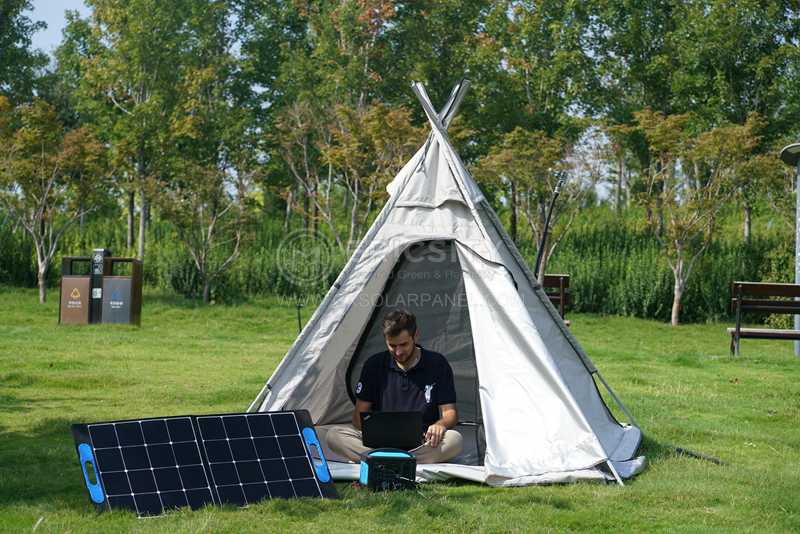HOT PRODUCT
Product Details
solar-powered Agriculture With Amorphous Flexible Panels
Solar-Powered Agriculture With Amorphous Flexible Panels
Introduction:
In recent years, the intersection of renewable energy and agriculture has led to significant advancements in sustainable farming practices. Solar power has emerged as a game-changer in the agricultural sector, offering a reliable and eco-friendly source of energy. While traditional solar panels have been widely adopted, the development of amorphous flexible panels has ushered in a new era for solar-powered agriculture. These panels provide numerous advantages over their rigid counterparts and offer exciting possibilities for the future of farming.
Understanding Amorphous Flexible Panels:
Amorphous flexible panels, also known as thin-film solar panels, are made by depositing a thin layer of photovoltaic material onto a flexible substrate, such as plastic, metal, or glass. Unlike traditional crystalline solar panels, amorphous panels do not require a rigid structure and can conform to various shapes and surfaces. This flexibility makes them ideal for integration into agricultural structures and equipment, offering innovative solutions for energy generation on farms.
Benefits for Solar-Powered Agriculture:
1. Versatility and Integration:
The flexible nature of amorphous panels allows them to be integrated seamlessly into various agricultural applications. They can be mounted on rooftops, attached to buildings, or even installed directly on farming equipment like irrigation systems, tractors, and greenhouses. This versatility helps farmers make the most of their available space, optimizing energy generation without compromising productivity.
2. Increased Energy Efficiency:

Amorphous flexible panels have higher energy conversion efficiency in low-light conditions compared to traditional solar panels, making them ideal for regions with inconsistent sunlight or areas with shading issues. Due to their unique manufacturing process, these panels can generate electricity even at non-optimal angles and orientations. This performance advantage translates to increased energy production potential for solar-powered agricultural systems.

3. Durability and Resilience:
Compared to crystalline panels, amorphous flexible panels are less prone to damage from physical stress. They can withstand impact, bending, and vibrations, making them more resistant to extreme weather conditions such as hailstorms or high winds. With their enhanced durability, these panels have a longer lifespan, reducing maintenance costs and increasing overall system reliability.
4. Cost-Effectiveness:
The manufacturing process of amorphous flexible panels is less resource-intensive compared to traditional solar panels. This translates to reduced production costs, making them more affordable for farmers looking to invest in solar-powered agriculture. Additionally, their lightweight construction reduces shipping and installation expenses. The economic viability of these panels makes solar power more accessible to a wider range of farmers, promoting sustainable energy practices in the agricultural sector.
Future Possibilities:
Amorphous flexible panels, with their unique attributes, have opened up new possibilities for solar-powered agriculture. Here are a few areas where these panels can revolutionize farming practices:
1. Vertical Farming: The flexibility of amorphous panels allows them to be integrated into vertical farming systems, where space is limited. These panels can be installed vertically along the farm walls, maximizing energy generation while also providing shade for the plants, reducing water evaporation, and regulating temperature.
2. Mobile Energy Solutions: The lightweight, bendable nature of amorphous flexible panels makes them ideal for portable solar systems. They can be used to power mobile irrigation systems, recharge electric farm equipment, or support off-grid farming activities in remote areas.
3. Greenhouses: Greenhouses can benefit from the integration of amorphous flexible panels into their structures. These panels can provide renewable energy to power ventilation systems, irrigation pumps, and heating elements, thereby reducing the reliance on fossil fuels and minimizing the environmental impact of greenhouse operations.

4. Crop Monitoring and Automation: Amorphous flexible panels can power sensors and data collection systems in agricultural fields. This enables real-time monitoring of crop health, soil moisture, and weather conditions. Such automation helps farmers make informed decisions about irrigation, fertilization, and pest control, leading to improved crop yields and resource utilization.
Conclusion:
The advent of amorphous flexible panels has revolutionized solar-powered agriculture. Their versatility, increased energy efficiency, durability, and cost-effectiveness make them attractive options for farmers seeking sustainable energy solutions. As technology continues to advance, amorphous panels have the potential to further transform agricultural practices, promoting environmentally friendly farming methods and ensuring a greener future for the industry.




